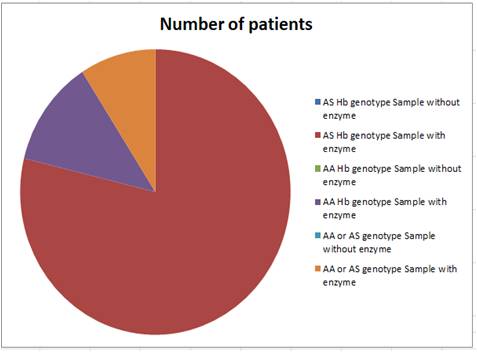Abstract
Tracking down a mutation for Single-cell anaemia (SCA) is a full-day, inquiry-based biology experiment that has given scientist a lot to do in the field of medicine. Gene therapy as so far proved to be the own escape route through the use of Hematopoietic stem-cell transplantation (HSCT) although it is limited to the donor availability. Clinical trials have been conducted concerning testing manufacturing, optimization and characterization of transduction hematopoietic stem cell FCP (final cell product) and its degree of vivo toxicology to ascertain the method. This study aims at establishing a prenatal diagnostic facility through determination of PCR performance and sensitivity and gel electrophoresis that will help in decision making regarding the fetus affected with sickle cell anaemia. Several samples were taken from affected patients using the chorionic villus biopsy, DNA extracted and subjected to amplification refractory mutation system (ARMS-PCR), to identify a mutation in the GAG-GTG gene for sickle cell anaemia. Gel electrophoresis was done from which it was found out that out of the 41 cases analyzed, 26 [70.73%] had AS Hb genotype, 4 [9.76%] had AA Hb genotype and 3 [7.32%] had SS Hb genotype and the reminded of 5 [12.20] had either AA or AS genotype. It was concluded that the ARMS-PCR has a high performance and 75% sensitivity hence can be used to study and detect patients with SCA mutation as a prenatal diagnostic facility. Gel electrophoresis was done from which it was found out that out of the 41 cases analyzed, 26 [70.73%] had AS Hb genotype, 4 [9.76%] had AA Hb genotype and 3 [7.32%] had SS Hb genotype and the reminded of 5 [12.20] had either AA or AS genotype. Detection of sickle anaemia requires a lot of information about the restriction enzymes to be restudied. It is easy to detect an irregularity in the human genome whenever any alteration is done more especially due to mutation. Sickle cell anaemia is one of the most studied genetic diseases that can be treated if noticed in the early stage through gene therapy.
Full text article
Generated from XML file
Authors
Farhan Hussain Ali. (2018). Identification of patients with sickle cell anaemia using restriction enzyme discrimination. International Journal of Research in Pharmaceutical Sciences, 9(4), 1254–1258. Retrieved from https://ijrps.com/home/article/view/4451
Copyright (c) 2018 International Journal of Research in Pharmaceutical Sciences

This work is licensed under a Creative Commons Attribution-NonCommercial-NoDerivatives 4.0 International License.

